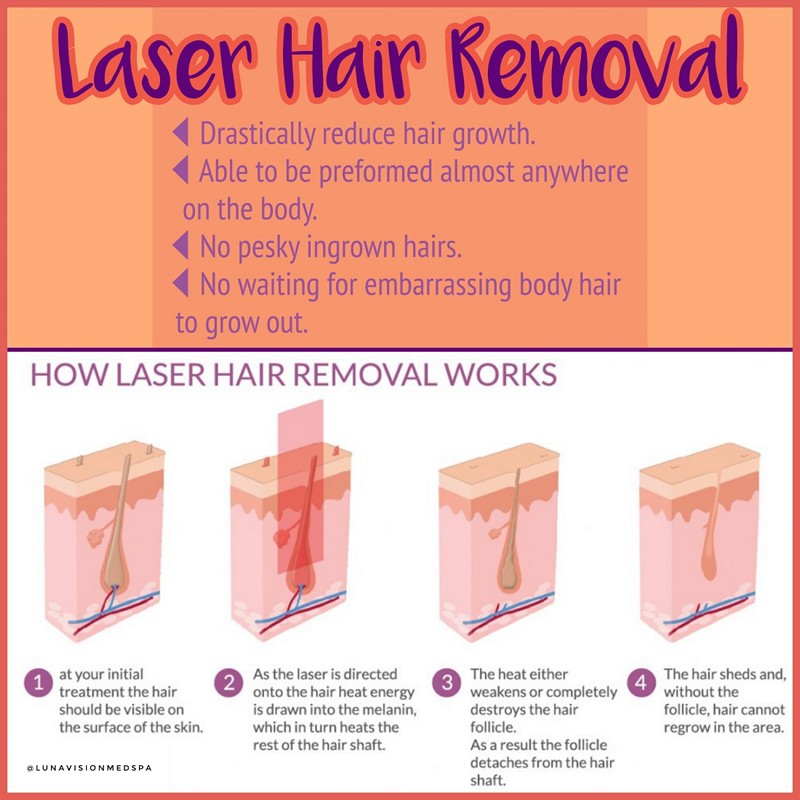Table Of Content

The bikini area can be a a great candidate for at-home laser hair removal, since a smaller area allows you to get used to the sensation and time commitment is takes. Chances are you’ve seen this affordable, buzzy device pop up all over social—and with good reason. It uses a multi-spectrum bulb to zap and permanently reduce hair, which makes it less painful than laser devices, making it a great choice for sensitive skin around the bikini area. The FDA has approved this device, and the brand guarantees permanent results within eight weeks. Multiple treatments over the course of several weeks are necessary to stop or slow down the hair growth cycle.
Braun Silk Expert Pro 5
However, it goes without saying the convenience of being able to carry out the treatments at home, in your own time, is a gamechanger for long-term hair removal. Plus, there is a substantial financial difference, as professional in-salon treatments tend to be very costly. Because this FDA-approved device is so compact and fits nicely in the palm of your hand, it's super easy to use. And like the name implies, it removes hair fast, emitting an impressive 150,000 pulses per minute. You can use it on your entire body, including sensitive areas like your upper lip and bikini area.
Med Beauty LA
Best Places for Waxing and Laser Hair Removal in NYC 2024 - Curbed
Best Places for Waxing and Laser Hair Removal in NYC 2024.
Posted: Thu, 14 Mar 2024 07:00:00 GMT [source]
Then, you should definitely opt for something cordless (The only one we tested that we loved was by Tria Beauty, FYI). Or if you want something that's going to be really easy to use, try the Braun Skin-I Expert, which connects to an app to help you track your treatments. A cooling effect to help bring down potential discomfort and pain, like the Ulike IPL device.
nood The Flasher 2.0
"Since laser hair removal works by targeting the pigment of the hair follicle, dark hairs tend to respond the best to laser hair removal," Garshick says. While burns can happen, Chiu cautions that doubling up on a specific area to lessen hair density won't speed up results and may lead to increased skin trauma. This popular tool is best for those specifically with fair to olive skin tones and darker hair. It nicely features an easy-to-read LCD screen, and uses three modes to slow body hair growth over the course of a few weeks. Experts advise that while the best at-home laser devices can provide effective results, users shouldn’t expect them to get rid of all their body hair overnight.
Both target hair color in the follicle and damage it to prevent regrowth. Diode lasers are more targeted, while IPL technology uses light waves and is less powerful. It is one of the fastest at-home laser hair removal devices on the market. However, tracking treatment may be less easy as the device does not have an LED display. According to our Diversity Pledge, 15% of products in our newly-published market roundups will feature Black-owned and/or Black-founded brands.
BoSidin takes pride in the fact it uses the same "medical-grade technologies" that professional cosmetic centers use. The precision head rotates from side to side for hard-to-reach contours, like near the bikini area. Several users agree that the device is painless or nearly pain-free. But if your pain tolerance differs, it even offers a cool mode to help shield you from the burning intensity of the light flashes.
While it’s always a good idea to talk with a dermatologist before use, IPLs are generally considered safe for most people. IPL treatment should be done cautiously with people who have more melanin in their skin, as it can cause their skin to burn and blister, leading to scarring. According to the brand, this machine works everywhere that hair grows, so feel free to treat your bikini, Brazilian, underarms, legs, arms, and face. This device is gentle enough to use on even the most sensitive areas—think the bikini area and the upper lip. So, if you're looking for something to treat legit every area of your body without causing irritation, this is the one for you. When buying a hair removal device, it's always a good idea to select the device based on the area you want treated.
View All Business Technology
It's always wise to do a spot test before going full steam ahead, particularly if you have darker skin, says Chimento. And never treat freshly tanned (even self-tanner!) or sunburned skin, she says. It's also important to exercise extreme caution with any potential skin irritants, such as retinoids, salicylic acid, or glycolic acid, before and after treatments. Although that super-affordable laser spa might sound better on your wallet, it might not end up being the best (or safest) option. Make sure that the person performing your treatment is licensed and knowledgeable (aka read reviews, DM people on Instagram who've posted before and afters—FWIW, we vetted all of the above studios carefully). Beth Gillette is the beauty editor at Cosmopolitan, where she covers skincare, makeup, hair, nails, and more across digital and print.
You'll also want to consider the size of the device you're purchasing and the area that you intend to use it on, says Dr. Mansouri. Basically, a tiny device meant for your face probably isn’t going to be the best if you’re looking for a tool to quickly target your legs. However, some people may experience blistering, scarring, scabbing, or other changes in the skin, such as redness, slight swelling, or soreness, which should only last a day or two. Please note that the writer of this article has not tried these products. All information presented is purely research-based and correct at the time of publication.
The device features a colour sensor to scan your skin, to determine the optimal energy setting. It took us several treatments to see results – though our hairs did grow back noticeable finer and sparser. Because some devices are more suitable for specific skin and hair types than others, it is crucial to inquire about the type of machine a facility uses and determine if it is the best option for you.
That said, both IPL and laser-hair removal can slowly destroy your hair follicle to reduce hair growth over time with continued use. But expect laser-hair removal to be a bit stronger (and potentially more painful or irritating), which is why it often yields quicker and better results. Meanwhile, IPL devices are usually not as intense, so they’re great for using consistently at home or for use on sensitive skin, like on your bikini line or face. Neither IPL nor laser-hair removal is “better,” it really just comes down to preference. True laser-hair removal only uses one wavelength of light (essentially, one precise laser beam) that targets just the hair follicle to help slow down hair growth.
It’s also designed to work for those with lighter hair, which is nearly impossible to find in the world of at-home hair removal — most blondes and redheads need to visit an office for a professional treatment. While we weren’t overly impressed by these extra bells and whistles, since we found we got a closer shave with our traditional razor, and struggled with attaching the epilator — we were impressed by the hair removal device itself. The flashes are incredibly bright, so we recommend wearing goggles, or even sunglasses (not included), for eye protection. The device boasts a patented elōs technology which combines IPL and Radio Frequency (RF) for a smoother, pain-free treatment that works on all hair colors. It took about six sessions before we noticed that hair was growing back slower and patchier, and with continued use, we’d expect to see worthwhile results that paid off on this investment. This lesser-known device from Kenzzi caught our eye thanks to the fact that it has five power settings, which means you can adjust based on your skin tone, the color of your hair, and let's be real, your pain tolerance levels.
The Tria Hair Removal Laser 4X scans skin and hair tone, only unlocking if safe to use. Higher settings are more painful and more effective, but they are not suitable for every skin tone. "The term laser hair removal is a bit misleading, as it really should be called laser hair reduction," notes Dr. Zeichner.

They use a single wavelength of life, similar to what is used in a professional's office. According to cosmetic chemist and beauty educator Michelle Wong, laser hair removal works on the premise that dark colors (your hair) absorb light (the laser). The light from the laser then heats the hair follicle to a point where it becomes damaged, resulting in no growth at all, or hair that’s much finer.

No comments:
Post a Comment